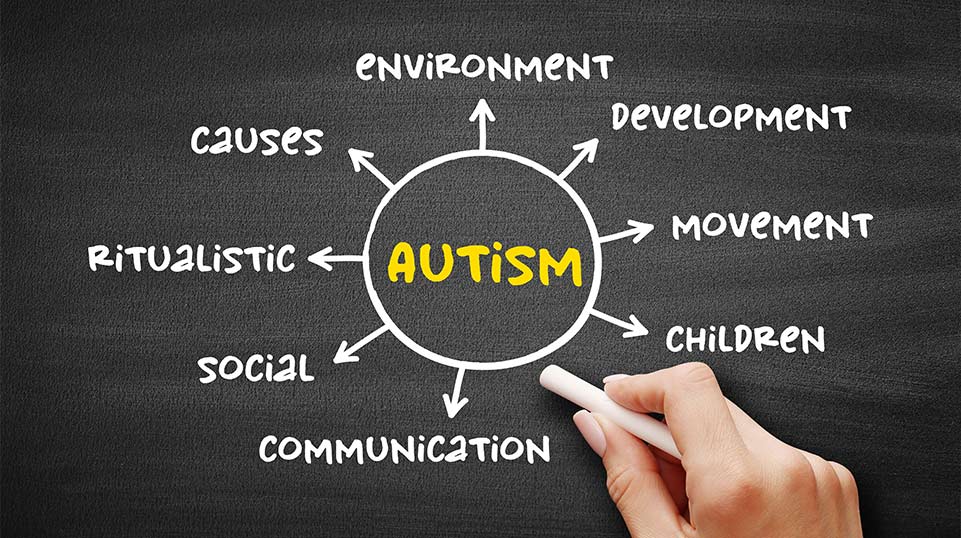Blog

The Fundamentals of ABA Therapy for Children
If your child has received an Autism diagnosis, they may be recommended for a specialized therapy known as ABA Therapy. In this article, we’ll review the basics of this evidence-based therapy and why it’s widely recognized as the gold standard for Autism intervention.
Before we do, it’s important to recognize that your child is the same child they were before the diagnosis. You, as a parent or caregiver, may be working through some emotions or stress about the next steps, but your child’s diagnosis does not limit their potential or define their identity.
ABA Therapy can address your child’s unique challenges while celebrating and nurturing their individual strengths and personalities. ABA Therapy should always be fun, engaging, and tailored to your exceptional child!
What is ABA Therapy?
Applied Behavior Analysis (ABA) Therapy is a widely recognized and supported type of therapy for children with Autism. It is evidence-based, meaning that numerous studies have demonstrated its effectiveness. It addresses a variety of skills and behaviors, including communication, social interactions, adaptive functioning, academic performance, and managing challenging behaviors.
Principles and Techniques
ABA Therapy is based on several research-based principles. They include:
- Behavioral Assessment: All behavior serves a function. ABA Therapy begins with a thorough evaluation that identifies target behaviors and analyzes their underlying functions.
- Antecedent-Behavior-Consequence (ABC) Analysis: ABA therapists analyze the ABCs of behavior:
- Antecedents – what happens before the behavior
- Behavior – the behavior itself
- Consequences – what happens after the behavior
- Positive Reinforcement: Positive reinforcement is simply rewarding desired behaviors. It increases the likelihood that a child will continue doing these behaviors in the future!
- Prompting: Prompting is just what it sounds like – offering cues or assistance to help a child with a task. Prompting can be verbal, visual, gestural, or physical, depending on the child’s needs.
- Chaining: Chaining involves breaking down complex behaviors into smaller, manageable steps and teaching each step sequentially. Once each step is mastered, they are linked together.
- Functional Communication Training (FCT): FCT involves teaching kids alternative ways to communicate their needs. For example, instead of a child screaming for a snack, they might learn to point to a picture of an apple or use a hand gesture indicating they’re hungry.
- Data Collection: ABA therapists record data on target behaviors to track progress. This allows them to make data-driven decisions about how effective the current interventions are.
- Generalization and Maintenance: ABA Therapy aims to promote the generalization of skills across settings, people, and contexts. This means that the progress made during therapy sessions should translate into practical and consistent application at home, in school, and within the community.
Positive Reinforcement Strategies
Positive reinforcement is an important component of modern ABA. Children are rewarded positively for positive behaviors. Most parents use positive reinforcement in some capacity with their children – regardless of whether their child has Autism.
In ABA, positive reinforcement can include:
- Verbal praise
- Tangible rewards like toys or snacks
- Token systems
- High-fives and smiles
- Allowing preferred activities after completing a task
- Social stories
Benefits of ABA Therapy
ABA Therapy is recommended as the best practice treatment for children with Autism by both the US Surgeon General and by the American Psychological Association. It targets the behaviors and skills that are often affected by Autism, including:
- Language and Communication
- Social Skills
- Personal Safety
- Play Skills
- Attention and Focus
- Emotional Regulation
- Self-Care
- Daily Living Skills
Multiple studies have shown that Early Intensive Behavioral Intervention (EIBI), involving 20-40 hours of ABA per week, improves behavior, expressive and receptive language, and generalized skills in children with Autism.
Improving Communication Skills
Speech and language skills are commonly affected in children with Autism. Some children experience significant delays in speech development, while others have minimal speech challenges. However, language skills, including pragmatic language and social communication, are typically affected in all children with Autism, regardless of their level of speech proficiency.
One of the main goals of ABA Therapy is enhancing communication skills. ABA therapists use several techniques tailored to each child’s needs and abilities. These include Functional Communication Training, as discussed above, as well as building language skills and social skills training.
Verbal Behavior Therapy is a subset of ABA that focuses specifically on teaching language and communication skills. Therapists break down language into functional units and use techniques like prompting and reinforcement to teach children to request, label, comment, and engage in conversations.
Reducing Challenging Behaviors
While all children may display challenging behaviors from time to time, those with Autism often experience more intense behaviors that significantly affect their daily lives. These behaviors can include tantrums and meltdowns, aggression, sensory sensitivities, repetitive actions, and wandering.
ABA Therapy reduces challenging behaviors through analysis, intervention, and reinforcement techniques. By first identifying the underlying causes of the challenging behaviors, such as communication deficits, sensory issues, or avoidance of a task, ABA therapists can develop targeted strategies to address them.
Finding the Right ABA Therapist
Once you have decided to pursue ABA Therapy, the next step is finding the right ABA provider. Make sure to ask lots of questions about the provider’s methods and treatment philosophy, and consider factors such as experience, compatibility, trust, and rapport before making a decision.
Westside utilizes Greg Hanley’s “My Way” approach to ABA Therapy. Greg Hanley is a clinical psychologist and behavior analyst known for his research and contributions to the field of ABA. Under this philosophy, we believe in:
- Leading with empathy
- Bringing joy to our learners
- Building positive & empowering relationships between child and therapist
- Play-based learning in the natural environment alongside peers
If your child requires additional therapies, such as Occupational or Speech Therapy, finding a provider offering a range of services to facilitate cross-disciplinary teamwork is beneficial. At Westside Children’s Therapy, we specialize in comprehensive Autism services including ABA Therapy, Occupational Therapy, Speech Therapy, Physical Therapy, Feeding Therapy, and Counseling.
Qualifications and Certifications
When you begin researching ABA Therapy, you’ll see different acronyms that refer to the level of qualification a provider has and their role in your child’s treatment. Here is what they mean:
- BCBA: Board Certified Behavior Analyst – A BCBA is a professional who has obtained a master’s degree in behavior analysis or a related field, completed specific coursework in behavior analysis, supervised practical experience, and passed the BCBA examination administered by the Behavior Analyst Certification Board (BACB).
- RBT: Registered Behavior Technician – An RBT is a paraprofessional who has completed specific training in behavior analysis and passed the RBT examination. They work under the supervision of a BCBA and provide direct therapy services to children with Autism.
Developing a Personalized Treatment Plan
ABA Therapy should always be individualized to the specific needs and goals of your child. At Westside, we always begin with a thorough assessment to identify your child’s strengths, challenges, preferences, and developmental level.
Based on this assessment, a personalized treatment plan is created, outlining targeted interventions and strategies to address specific skills and behaviors. Our goal is to promote positive outcomes and improve your child’s quality of life. We believe in fun and engaging interactions, ensuring that each session is filled with joy and laughter.
To learn more about ABA therapy or other Westside services, please click the link below or call us at (815) 469-1500 and our team will walk you through the process.




